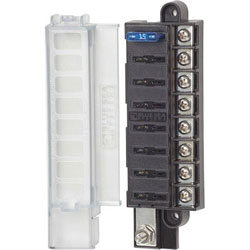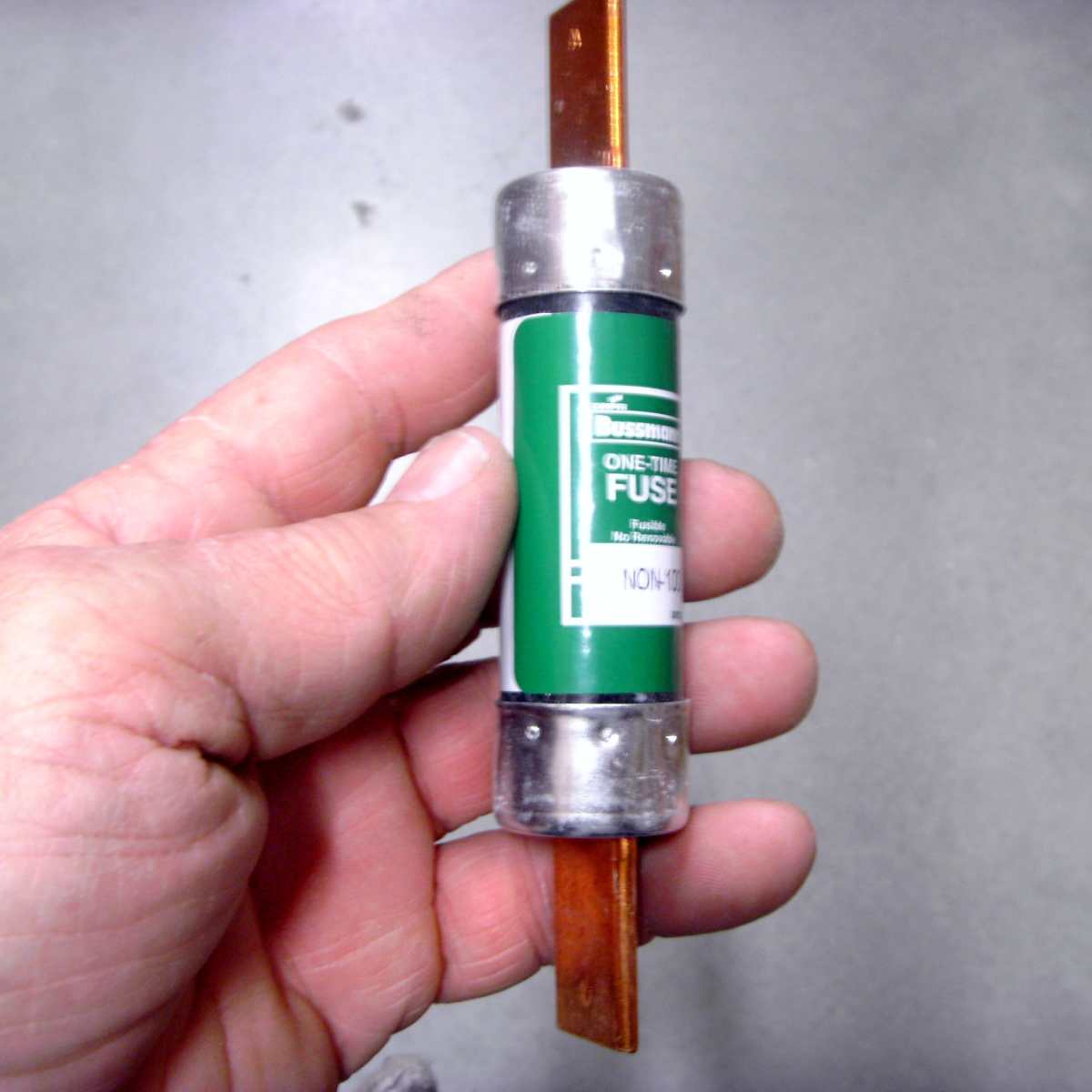The Ultimate Guide To Blue Sea Fuse Block
Wiki Article
What Does Blue Sea Fuse Block Mean?
Table of ContentsWhat Does Blue Sea Fuse Block Mean?The Ultimate Guide To Blue Sea Fuse Block5 Easy Facts About Blue Sea Fuse Block ExplainedNot known Incorrect Statements About Blue Sea Fuse Block Some Ideas on Blue Sea Fuse Block You Need To KnowSome Known Factual Statements About Blue Sea Fuse Block
Fuses are bolted in position between the bus bar and also the 2nd set of electrically separated bolts. With this installment you can connect the watercraft's different high-current circuits, such as a windlass, bow thruster, high-output alternator, the DC panel, and so on, to the separated bolts. The numerous merges are sized according to the current-carrying capability of the conductors bolted to them.Some circuits will still require to bypass the isolation switch to ensure that they might be left on when the rest of the watercraft is shut down. blue sea fuse block. These circuits generally consist of a bilge pump as well as any kind of charging tools (including solar panels, perhaps a wind generator, and the inverter if it likewise functions as a battery charger).
This belongs to the circuit representation we created for the facility example boat in our Watercraft Electrics training course. The gadgets connected to the fuse block in the top right are all bypassing the seclusion switch S1. If you enroll in Boat Electrics 101, you will learn just how to read such a layout and additionally just how to make one for your own boat.
Unknown Facts About Blue Sea Fuse Block

The goal is to provide defense at the source of power for each circuit. With DC circuits, the OCP is always put in the silver lining of DC circuits. (Aside from anything else, an unbroken link to DC adverse must be preserved in all times to safeguard versus stray-current deterioration.) Keep in mind that some European boatbuilders install merges as well as battery buttons in the DC adverse side and on the silver lining, but this is not recommended except in some isolated (floating) ground DC systems.
This factor might be at the battery, the battery switch, the circulation panel, a subsidiary panel, some circulation bus bar, or other linking point. If the conductors in the brand-new circuit are no smaller sized than the conductor that feeds the brand-new circuit's point of link, then the OCP for the feeder conductor will completely secure the brand-new circuit - blue sea fuse block.
The Basic Principles Of Blue Sea Fuse Block
Yet if the new circuit is not sufficiently offered by overcurrent devices already in location, additional security is called for at its point of connection, i. e., at its resource of power. Positioning of integrates in the favorable conductor. Keep in mind exactly how a smaller fuse is used each time a smaller conductor is attached, In some cases area limits exactly how close an OCP device can be positioned to the resource of power.The common response, from the ABYC, is within 7" (17. The ABYC allows the following, which have been tightened up in current years: A conductor attached directly to a battery that is likewise "included throughout its entire distance in a sheath or unit such as an avenue, junction box, control box or enclosed panel" must have click here to find out more its overcurrent protection "as close as practicable to the battery, yet not to surpass 72 inches (1.
Gone is the blanket 72" allocation that used to be there. A conductor linked to a resource of power apart from the battery (e. g., the battery switch, the distribution panel, or some various other factor in the DC circuits) that is likewise contained in a sheath, and so on, should have its overcurrent protection "as close as achievable to the factor of connection to the source of power, however not to exceed 40 inches (1.
What Does Blue Sea Fuse Block Do?
Given that generators themselves are a resource of power, it has actually been debatable whether these added generators required OCP at the alternator itself."Cranking-motor circuits are not required to have overcurrent protection.In the marine area, where cranking circuits might be long, this method might create a risk. It makes no sense to have any unprotected circuits on a boat.
In cold weather condition, the inrush existing on a 12V starter electric motor may be as high as 1,500 amps; the cranking current may be as much as 200 amps. Commonly, cranking conductors are undersized even for the cranking current, not to mention the inrush present. This circumstance look at this now does not present a security problem in itself, due to the fact that these currents are received for just a couple of seconds, so the conductors do not have time to obtain warm sufficient to produce a fire hazard.
The 20-Second Trick For Blue Sea Fuse Block
We made the training course with absolute novices in mind. As the electric load on boats rises, so too does the complexity of electric circuits and also the capacity for brief circuits and electric fires.
In the marine area, where cranking circuits may be long, this method could create a threat. It makes no sense to have any kind of vulnerable circuits on a watercraft.
Blue Sea Fuse Block Can Be Fun For Anyone

We made the training course with absolute newbies Full Article in mind. As the electrical tons on watercrafts increases, so too does the intricacy of electric circuits and also the capacity for brief circuits and electrical fires.
Report this wiki page